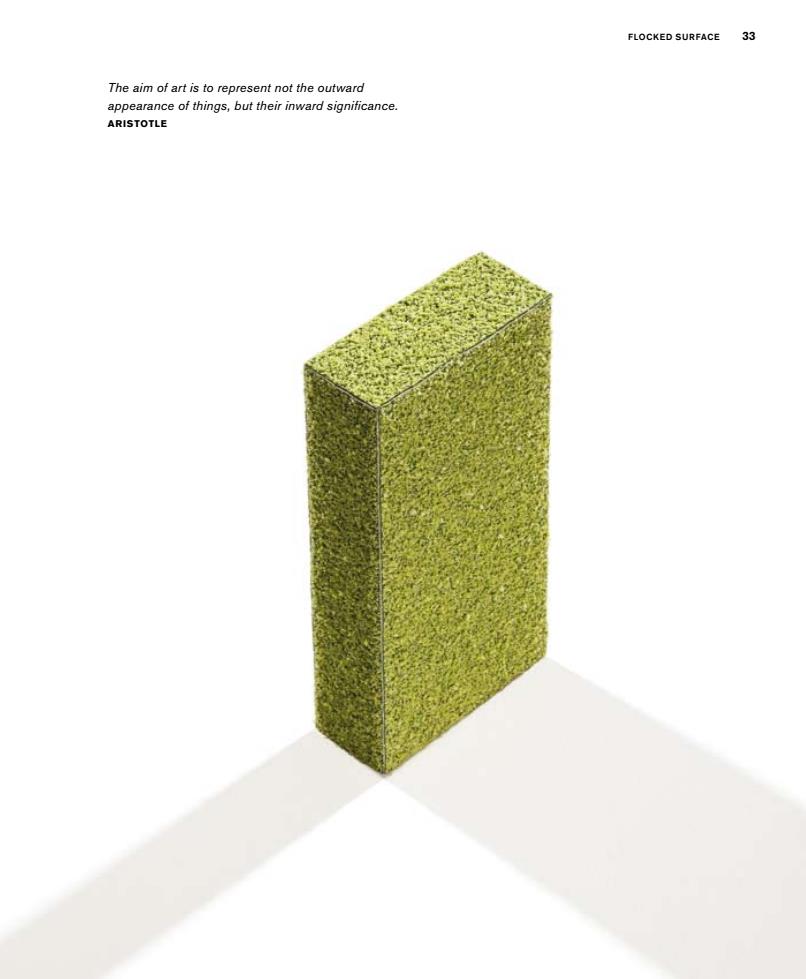
FLOCKED SURFACE 33 The aim of art is to represent not the outward appearance of things,but their inward significance. ARISTOTLE
flocked surface 33 The aim of art is to represent not the outward appearance of things, but their inward significance. Aristotle
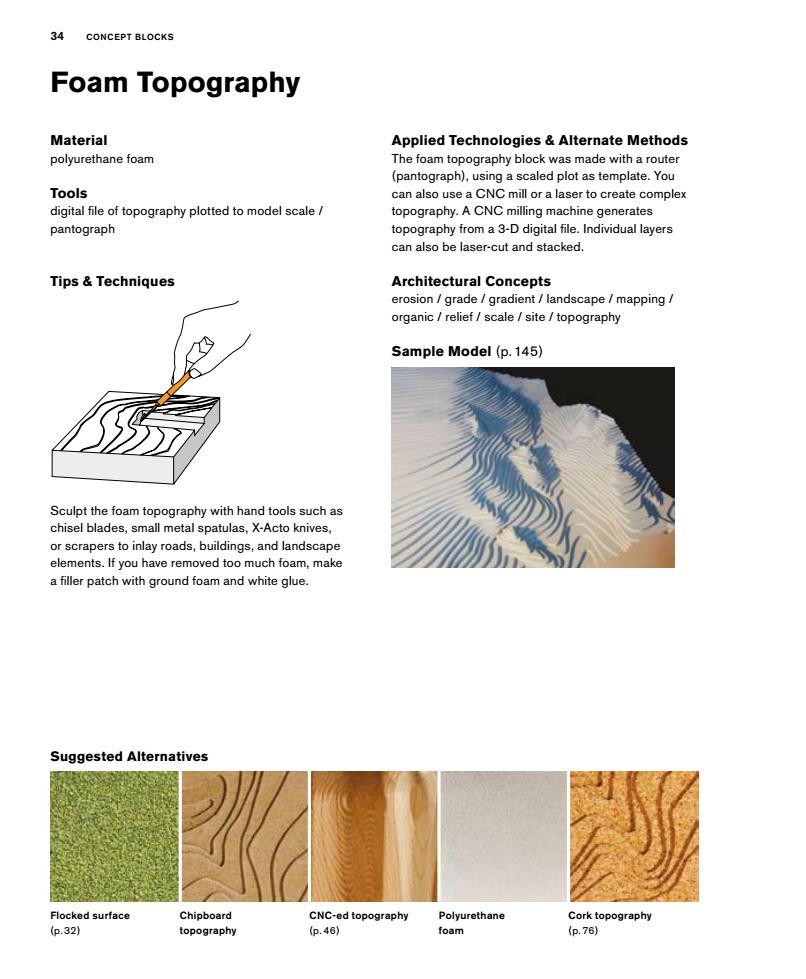
34 CONCEPT BLOCKS Foam Topography Material Applied Technologies Alternate Methods polyurethane foam The foam topography block was made with a router (pantograph),using a scaled plot as template.You Tools can also use a CNC mill or a laser to create complex digital file of topography plotted to model scale/ topography.A CNC milling machine generates pantograph topography from a 3-D digital file.Individual layers can also be laser-cut and stacked. Tips Techniques Architectural Concepts erosion/grade /gradient landscape /mapping organic /relief/scale site/topography Sample Model(p.145) Sculpt the foam topography with hand tools such as chisel blades,small metal spatulas,X-Acto knives, or scrapers to inlay roads,buildings,and landscape elements.If you have removed too much foam,make a filler patch with ground foam and white glue. Suggested Alternatives Flocked surface Chipboard CNC-ed topography Polyurethane Cork topography (p.32) topography (p.46) foam (p.76)
Applied Technologies & Alternate Methods The foam topography block was made with a router (pantograph), using a scaled plot as template. You can also use a CNC mill or a laser to create complex topography. A CNC milling machine generates topography from a 3-D digital file. Individual layers can also be laser-cut and stacked. Architectural Concepts erosion / grade / gradient / landscape / mapping / organic / relief / scale / site / topography Sample Model (p.145) Foam Topography Material polyurethane foam Tools digital file of topography plotted to model scale / pantograph Tips & Techniques Sculpt the foam topography with hand tools such as chisel blades, small metal spatulas, X-Acto knives, or scrapers to inlay roads, buildings, and landscape elements. If you have removed too much foam, make a filler patch with ground foam and white glue. 34 Concept Blocks Suggested Alternatives Flocked surface (p.32) Chipboard topography CNC-ed topography (p.46) Polyurethane foam Cork topography (p.76)
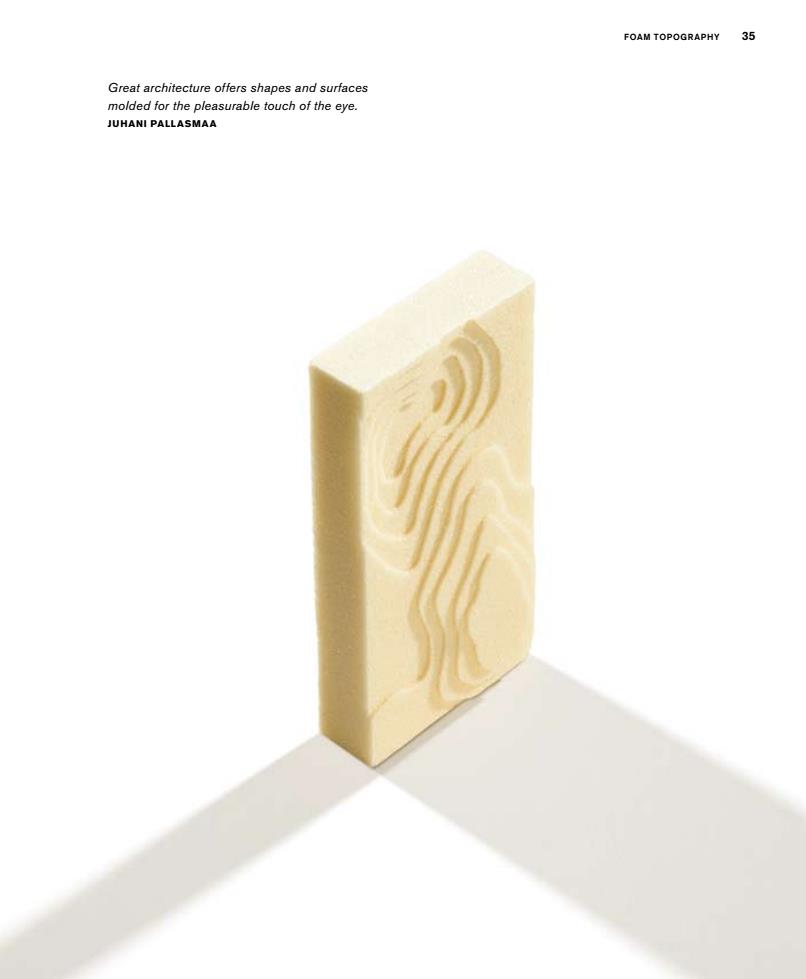
FOAM TOPOGRAPHY 35 Great architecture offers shapes and surfaces molded for the pleasurable touch of the eye. JUHANI PALLASMAA
foam topography 35 Great architecture offers shapes and surfaces molded for the pleasurable touch of the eye. Juhani Pallasmaa
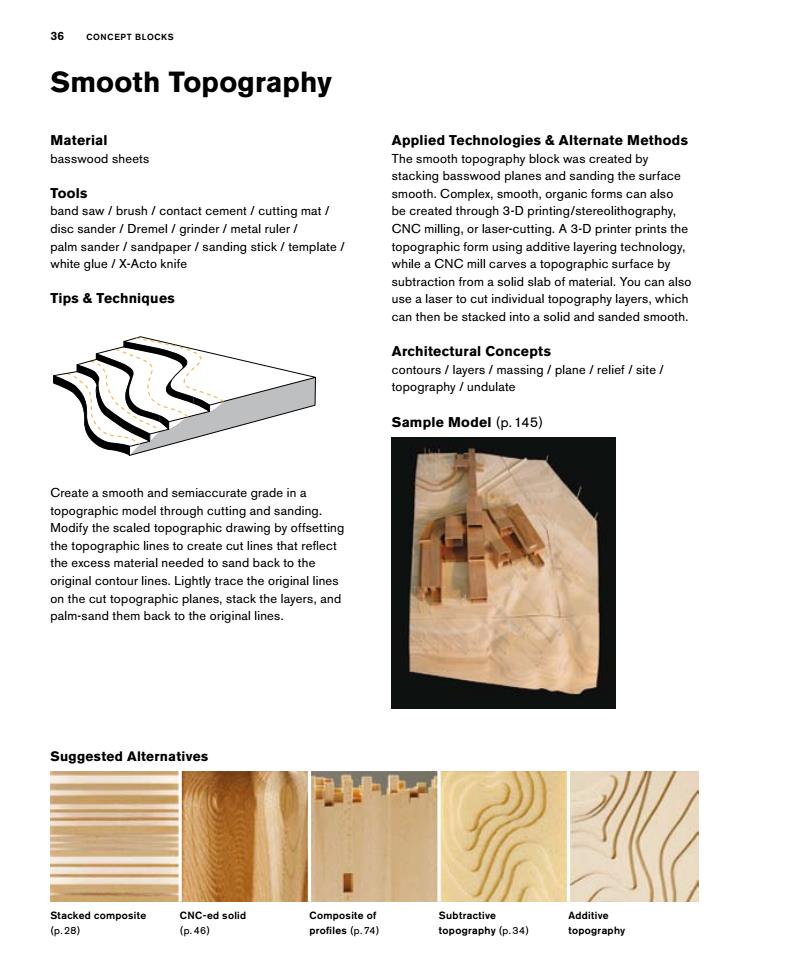
36 CONCEPT BLOCKS Smooth Topography Material Applied Technologies Alternate Methods basswood sheets The smooth topography block was created by stacking basswood planes and sanding the surface Tools smooth.Complex,smooth,organic forms can also band saw brush contact cement cutting mat/ be created through 3-D printing/stereolithography, disc sander Dremel grinder/metal ruler CNC milling,or laser-cutting.A 3-D printer prints the palm sander/sandpaper/sanding stick/template/ topographic form using additive layering technology. white glue /X-Acto knife while a CNC mill carves a topographic surface by subtraction from a solid slab of material.You can also Tips Techniques use a laser to cut individual topography layers,which can then be stacked into a solid and sanded smooth. Architectural Concepts contours/layers massing plane/relief/site/ topography undulate Sample Model (p.145) Create a smooth and semiaccurate grade in a topographic model through cutting and sanding. Modify the scaled topographic drawing by offsetting the topographic lines to create cut lines that reflect the excess material needed to sand back to the original contour lines.Lightly trace the original lines on the cut topographic planes,stack the layers,and palm-sand them back to the original lines. Suggested Alternatives Stacked composite CNC-ed solid Composite of Subtractive Additive (p.28) (p.46) profiles (p.74) topography (p.34) topography
Applied Technologies & Alternate Methods The smooth topography block was created by stacking basswood planes and sanding the surface smooth. Complex, smooth, organic forms can also be created through 3-D printing/stereolithography, CNC milling, or laser-cutting. A 3-D printer prints the topographic form using additive layering technology, while a CNC mill carves a topographic surface by subtraction from a solid slab of material. You can also use a laser to cut individual topography layers, which can then be stacked into a solid and sanded smooth. Architectural Concepts contours / layers / massing / plane / relief / site / topography / undulate Sample Model (p.145) Smooth Topography Material basswood sheets Tools band saw / brush / contact cement / cutting mat / disc sander / Dremel / grinder / metal ruler / palm sander / sandpaper / sanding stick / template / white glue / X-Acto knife Tips & Techniques Create a smooth and semiaccurate grade in a topographic model through cutting and sanding. Modify the scaled topographic drawing by offsetting the topographic lines to create cut lines that reflect the excess material needed to sand back to the original contour lines. Lightly trace the original lines on the cut topographic planes, stack the layers, and palm-sand them back to the original lines. 36 Concept Blocks Suggested Alternatives Stacked composite (p.28) CNC-ed solid (p.46) Composite of profiles (p.74) Subtractive topography (p.34) Additive topography
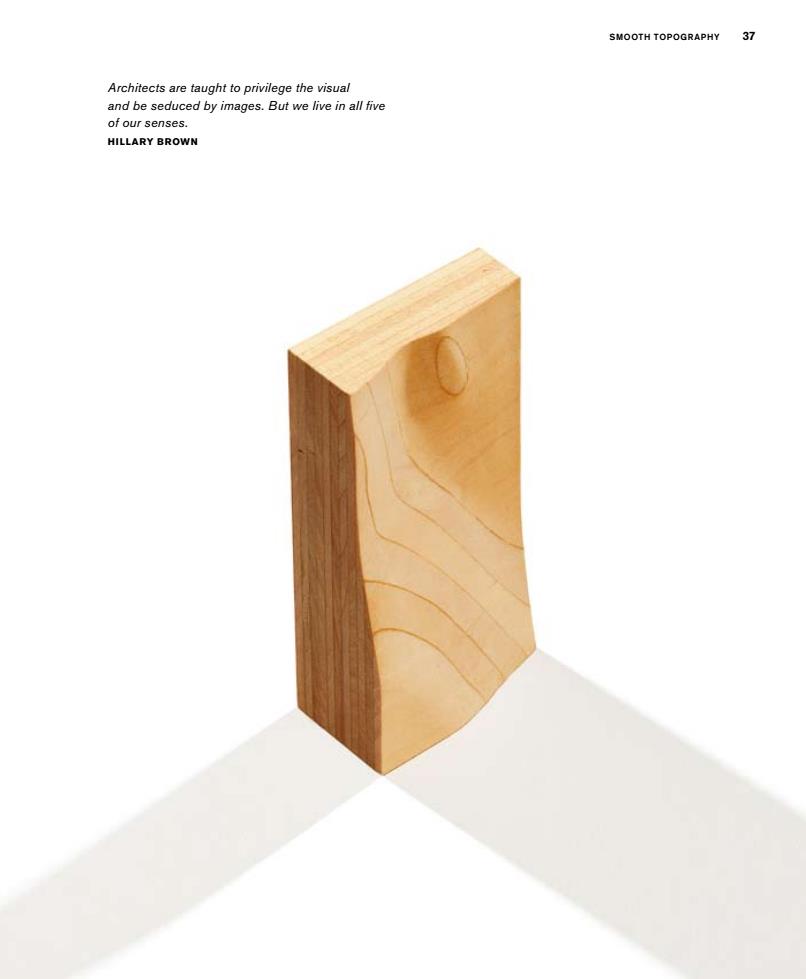
SMOOTH TOPOGRAPHY 37 Architects are taught to privilege the visual and be seduced by images.But we live in all five of our senses. HILLARY BROWN
smooth topography 37 Architects are taught to privilege the visual and be seduced by images. But we live in all five of our senses. HiLlary Brown